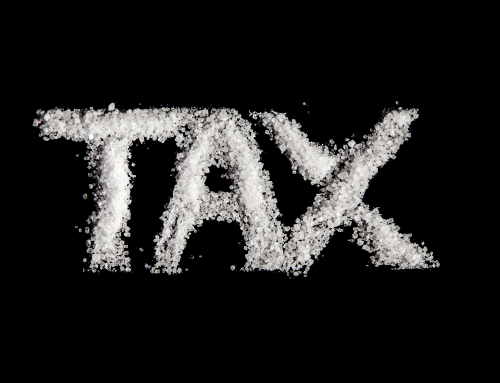The Problem Behind the Sugar Problem
There has been a lot of focus in the past weeks about the possibility of taxing “added sugar” in soft drinks, with pro-tax movements springing up on this subject on both sides of the Atlantic and in Australia. However, a tax on “added sugars”, the benefit of which is debatable to begin with, is really barely scratching the surface of the issue of the overconsumption of sugar in our society. As a person who works with brands to design and develop not just the brand and its identity, but also the portfolios of products and ingredients behind those brands, I’d like to share a few of my thoughts on what I believe to be the larger issue, and that is “sweetness”.
Aside from all the other major health, nutrition, safety and environmental concerns around most processed products, and there are many of them, “high sweetness” stands out as one of the most critically urgent for our societies to come to terms with. The average person consuming the average diet today is consuming not just thousands of percent more sugar than their ancestors consumed a century ago, but they are also consuming many products at a generally higher intensity of sweetness across the course of an average day than their ancestors as well.
Sweetness Intensity
This is not to say that traditional diets don’t contain intense sweetness. They absolutely do. Bursts of intense sweetness were often to be found in traditional foods prepared for dessert or as part of a feast. The western nations can’t even be said to be the greatest lovers of the highest intensity of sweetness. Many a rice-pudding-loving Brit or apple-pie-loving American has been taken aback in India on their first taste of treats like burfi or jalebi (which my husband associated with happy Sunday mornings). We humans are just wired by nature to see sweetness as “food safety” and “survival security” cues, so as far as our human body’s initial response, when it comes to sugar, the more the merrier. Unfortunately, our human biology does not evolve quite as quickly as food processing and societal and corporate sweetness preferences have in the past hundred years.
In spite of the previous shocking intensity of Indian sweets to the western palate, there has been an overarching shift towards more and more intensity of sweetness in the western nations too as the decades of the 20th century proceeded. It was patchy however, with some nations having a sweeter palate than others. Raising my children in Canada, I would always look forward to trips to the UK or Australia in which I could enjoy the occasional Cadbury’s chocolate, which, while highly sweetened, tasted much less sweet than the horrifically cloying, gum-smacking sweetness intensity of north American chocolates. Even on the worst sugar-craving day I couldn’t face any product made by Hershey’s, since, at least to my palate, I could enjoy a lower sweetness intensity by simply eating honey or table sugar straight from the jar.
Yet gradually, we all seem to have slid inexorably in the general direction of more sweetness intensity, even though, as you may have noticed, there are clearly many people who actually prefer a less sweet flavour in their processed products. The gradual increase in sweetness over time has probably had a great deal to do with ingredient prices, the widespread introduction of inexpensive high fructose corn syrup, and a desire on the part of most multinational corporate brands to achieve as much taste and sweetness consistency as possible across all of their manufacturing operations. Taste an Australian bar of Cadbury’s chocolate today and it’s every bit as overly sweet and awful as any Hershey’s Bar.
The positive trend towards better health and higher quality ingredients has meant that those who know they like an occasional little chocolate burst in their lives have long since moved on to the more expensive organic, fair trade, lower sugar and lower sweetness dark chocolates they’re purchasing online or from local health food stores. These people are the early adopters in a tsunami of change that is to come in our personal eating habits, and more importantly, our societal preferences when it comes to sweetness intensity.
But let’s not just pick on chocolate brands and soft drinks when we discuss this issue, shall we? They’re easy targets. And they’re not really the ones poised to do the most damage. That’s because we already look down our collective noses at the commercial soft drink and chocolate categories as “junk food”. Far more damaging are the categories enjoying the unearned luxury of the “health halo”.
Health Halo Hell
At this very moment there must be hundreds of thousands, possibly even millions of young parents all over the world, sitting in their GP’s waiting room, with their little child in a pram who is sucking on a juice-box or a pouch of yoghurt. Those young mums and dads will have no concerns or embarrassment when they wheel their sugar-laden child in to see the doctor. Indeed, most doctors themselves won’t see anything wrong with a “no added sugar” juice box, or a pouch with the word “yoghurt”, or some branded derivation of such, prominently displayed on the front of the packaging. A frightening number of doctors would consider both of these items to be reasonably good “food choices” for those children.
It is both my personal and professional opinion that “no added sugar” fruit juices and sweetened fat-free yoghurt are far more dangerous categories of product than are soft drinks or chocolates or candy. There are some people who may be blissfully unaware that it doesn’t look good to give your child a can of soft drink to enjoy while at the doctor’s office, and let’s face it, you, me and Charles Darwin don’t really hold out a lot of hope for them. However a large cohort of the mums and dads handing over the juice boxes and fat-free yoghurt pouches actually believe they’re making healthy choices for their children! Meanwhile, what they’re really doing is contributing to the future of the obesity and type 2 diabetes epidemics as they train their children into having a sweet tooth tuned to super high intensity sweetness, and all with their doctor’s likely unspoken but tacit agreement.
Supermarket shelves are filled with products that promise the very essence of good health, in lovely healthy-looking packaging, with carefully crafted copy exuding healthiness all-the-while featuring copious amounts of sugar, often under a variety of clever names, in the ingredients panel, or as naturally occurring sugar in unnaturally processed foods and drinks that can then legally claim they contain “no added sugar”. As our supine global medical-industrial complex slowly comes to grips with the awful health realities of sugar over-consumption, you’ll note there’s not much in the way of “informed consent” going on with most product labels.
Government projects such as Australia’s “Health Star Rating” system, have parents handing over the big tin of Milo, with its powerful promise of giving “energy”, which is marketing code for sugar, to their kids after school everyday, “safe” in the knowledge that as long as that glass of milk is low fat, nobody’s saying anything about how much sugar is in those two heaping tablespoons most kids will load in with it. And all with a top 5-star health rating, supported happily by both government and industry. Of course.
Let’s Not Forget Fruit
Meanwhile, even if you steer your shopping cart to the fruit section, and ignoring the chemical horrors that abound there, the fruits themselves represent many decades of selective breeding to enhance sweetness. The apple you enjoy today is far sweeter than the average apple our ancestors enjoyed hundreds of years ago. It also contains a mere fraction of the nutrition, thanks to lifeless, over-farmed soils devoid of mineral content. However it does have the same, or even slightly more calories as older varieties, which is something to consider when you discover that your blood sugar just crashed because you ate an apple and a carrot for afternoon tea instead of the usual Mars Bar, which probably didn’t crash your blood sugar because it had some fat in it. Don’t get me wrong – I love fresh fruit. But I say that because I love sugar…you know, in the way a heroin addict loves heroin. And hey, overly-sweet fruits have the whole benefit of that fantastic health halo, sans packaging, that will have all your work buddies nodding in approval at your “healthy diet choices” when you bring an apple, a banana, and a sweet juicy peach to work for your afternoon insulin overdose.
My Call for Low Sweetness Products & Retraining Our Palates
I just want us all to be really honest with ourselves for a moment. Processed foods are not going away, not even the ultra-processed varieties. Junk foods are not going away. I know, just like you I occasionally have visions of a world in which everyone eats organic, chemical-free, real foods, prepared from scratch, all the time. In that world nobody ever finds themselves stuck between meetings that went overtime, trying to grab some quick sustenance so they can avoid completely falling over, only to discover that the only available options are a McDonald’s, a Baskin Robbins and a Thai restaurant that’s currently closed. In that world nobody ever goes out to a coffee meeting where, in spite of telling their colleague they only want a tall black, they are then presented with that and a “high fibre” chocolate chip muffin that’s larger than most dinner plates used to be. And most importantly, in that utopian vision, nobody ever craves sugar. Just a little bit of a sweet something – you know, because I’ve not been feeling myself today. Of course, everybody in that wonderful world is a veritable Sherlock Holmes-style sugar sleuth, who will never consume a healthy looking tub of forest berries yoghurt for lunch, “because it’s low fat and hasn’t got too many calories”. No, that world is not going to exist in my lifetime, or probably yours, and it’s about time we confronted the fact and took the decisive steps that need to be taken in order to defend the limited health we still have as a society, and upon which we hope to build in the future. Amongst those numerous decisive steps, weaning our society off “high sweetness” and into an appreciation of “low sweetness” has got to be high on the agenda.
The shift to low sweetness will only be delivered to a certain degree with the assistance of brands offering low sweetness products, because it’s through the high sweetness products that so many children develop that deadly sweet tooth in the first place. The truth is that many of the big brands will never be able to redeem themselves after the damage they’ve done. Instead, both the challenge and the market opportunity will fall to those small and medium sized brands who care to put together a portfolio of high quality products, featuring preferably organic ingredients, with minimal processing, and a low sweetness point. Properly managed, those brands that hear the call will do well in the coming years. But we’ll need more than that. We’ll need to start talking about sweetness. We’ll need to accept that sugar will not go away, but that a little bit of monk fruit or stevia or even real, natural sugar in a low sweetness product is still a better choice than lots of sugar or synthetic sweeteners in a high sweetness product.
We need to have public discourse on the matter of sweetness. We need public campaigns educating parents not to train their child’s taste preferences into high sweetness. We need public campaigns assisting those with a preference for lots of intense sweetness to shift to a diet which is generally very low in sugar and other sources of sweetness in which some low sweetness occasions can be enjoyed. This can be done. People who give up sugar and high sweetness for only a matter of weeks often begin to reset their taste preferences so that a small amount of sweetness is all they require, on those increasingly rare occasions when they desire anything sweet at all.
Next Steps
For now, the way that brands can begin to respond to the sugar issue is to ensure they are using natural sweeteners only, and by authentically offering and promoting low sweetness versions of their core product range.
For parents wanting to get fruits into their children, try choosing more berries rather than the very sweet fruits on offer, noting that berries are notorious for also providing nasty agricultural chemicals that cannot be washed off, so try to go organic whenever you can.
For governments and regulators, let’s get this discussion off the ground. Let’s not throw the baby out with the bathwater. We don’t need to ban sugar – we just need to stop the insane over-consumption of it. Let’s confront the fact that human beings are going to consume a proportion of their calories, in terms of broad averages, from processed, naturally sweet and sweetened products, and then ensure that low sweetness options are both available and widely understood to be a superior choice, if sweetness is desired at all.
Finally, we need to start being smarter than just talking about added sugar. It’s a great starting point, but some of the sweetest and most damaging products on the shelves contain no added sugar at all, and taxing added sugar will simply increase their market share. That means we need to educate the people about sweetness intensity, and sweeteners, to ensure more people can make an informed choice when they buy that bottle of “no added sugar” fruit juice. So tax or no tax, let’s move this public discussion to the heart of the issue. Sweetness.
Some key product categories where high sweetness is a problem:
Fruit juices (especially juice boxes for children)
Breakfast cereals
Powdered and liquid milk flavourings and toppings
Ready-to-drink flavoured milks
Café-bought coffees, chais and hot chocolate drinks
Chilled and frozen yoghurts
Soft drinks
Toothpaste
Ice creams and frozen or chilled desserts
Canned and bottled fruit
Health-food bars (protein bars, muesli bars etc)
Biscuits, cookies, cakes and muffins
Candies, sweets and chocolates
Sauces and ketchups
Note: This is not a complete list, but rather some thought starters as to categories where action can be easily taken. And no, this list does not contain the many categories in which sugars are the hidden ingredients





Wonderful article Melody! I have been eating these past two weeks on a low sugar diet, to control insulin. And for the first three days I had a headache, just like I did when I quit smoking and was in withdrawal from nicotine. Seems like they were both an addition. Thank you for talking about the “no sugar added” information too. I was shocked when I was looking at the nutrition labels on yogurts and how much sugar there was. It looks like when they are trying to go non-fat that the manufacturers are adding sugar to make up for what they think is a lack of taste. But you opened my eyes to making sure I read the ingredient list too.